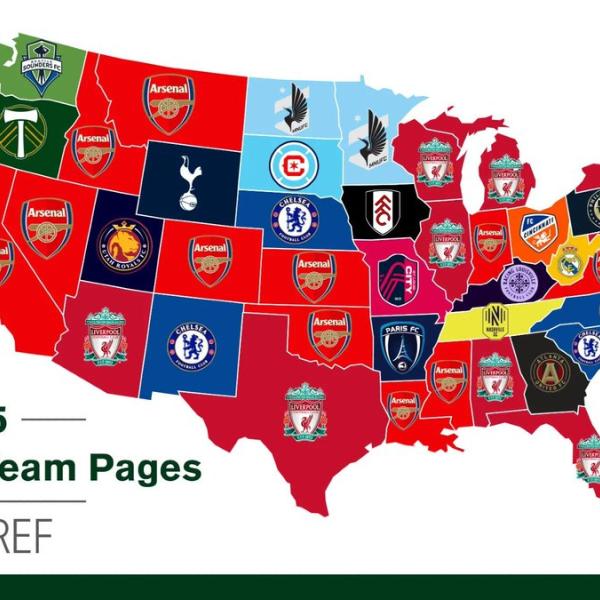FIFA released the official logo and posters of the host cities for the 2018 World Cup on their website the other day. Their are 12 venues in 11 host cities with nine new venues being built. Below are the posters along with official previews and info provided by FIFA for each host city. Enjoy the little history lesson for each of these Russian cities.
Moscow- Luzhniki Stadium (upgraded) and Spartak Stadium (New)
Moscow is one of the world’s great capitals, rich in iconic, historic architecture, yet focused on a future that is bright and youthful. Beneath the walls of the ancient Kremlin beats a city that is second-to-none in terms of energy, style and fun. These elements are reflected in the colorful swirls on the poster. Just as Moscow is the heart and soul of a Russia, it is also is the centerpiece of the 2018 World Cup.
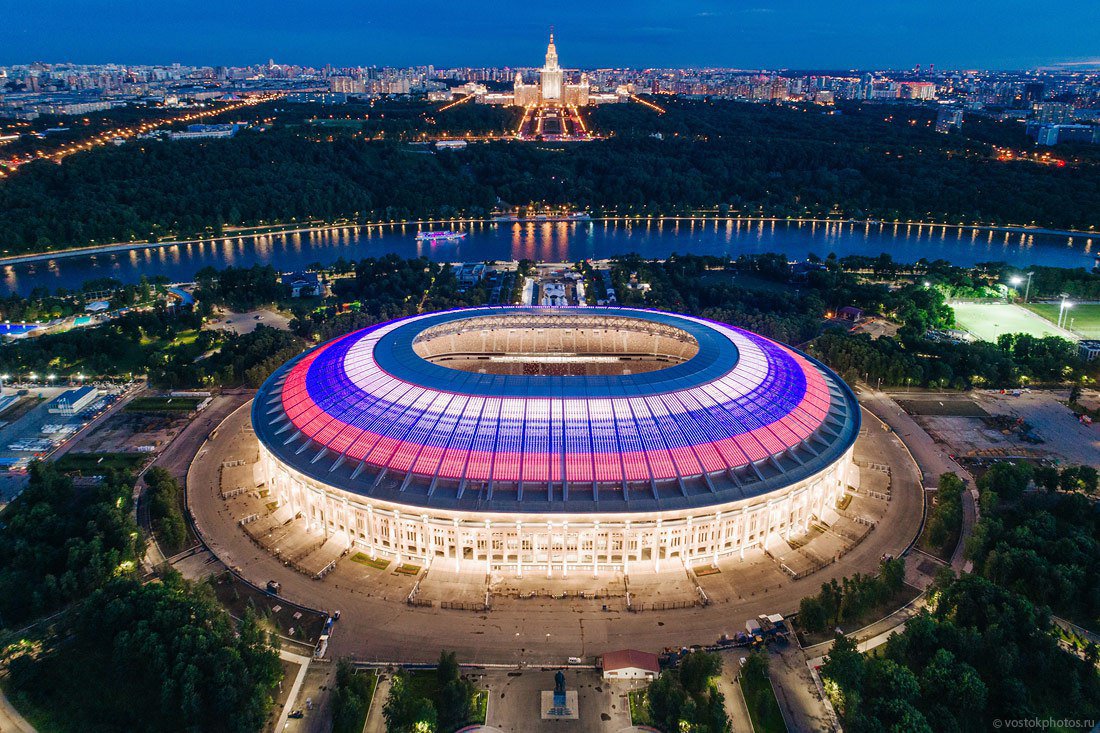
Saint Petersburg- Zenit Arena (New)
Russia’s Crown Jewel of the north, St. Petersburg offers magic at any time of the year. St. Petersburg has inspired poets, artists, musicians and writers since its beginnings. St. Petersburg’s truly unique architecture is featured on the poster, from the Saint Isaac's and Smolny Cathedrals to the Summer Palace gate and Admiralty tower.

Kazan- Kazan Arena (New)
Kazan…even the name sounds magical – and it is. Kazan is the capital of the Republic of Tatarstan, an autonomous republic of the Russian Federation located 825 km west of Moscow. The Snow Leopard is the national symbol of the republic and is the central focus of Kazan’s poster, rising from the pitch, perched on a football. The national colors of the Tatarstan flag are included in the boards around the pitch, and the rays of sunlight reflect optimism, success and good fortune in Tatar culture.
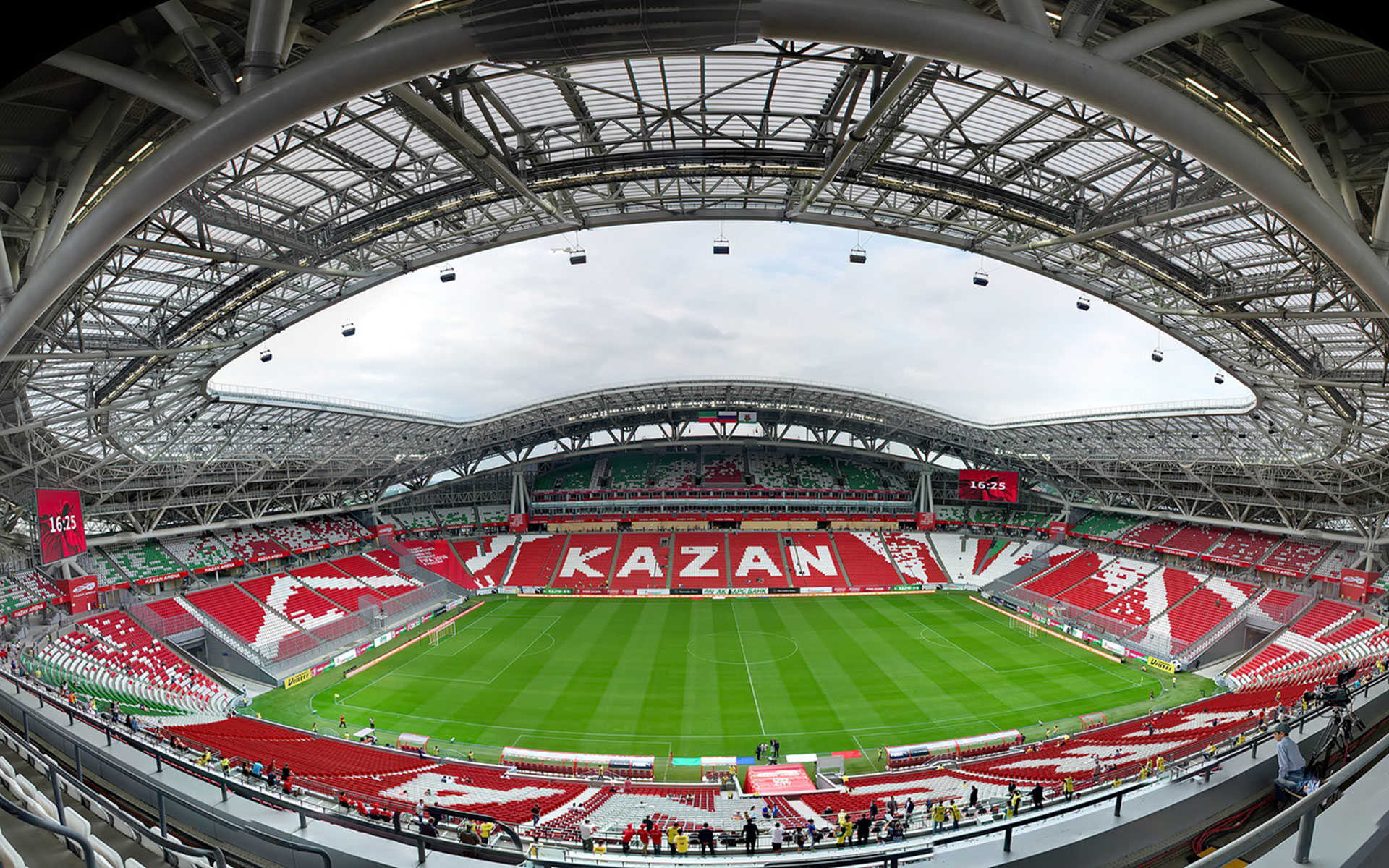
Sochi- Fisht Olympic Stadium (New)
Sochi, host of the Winter Olympics is a beautiful resort on the sunny Black Sea is a city of contrasts. From the warm, seaside beaches to the heights of the snow capped Krasnaya Polyana mountain range Sochi, is really a Sea-to-Sky city and experience. The poster represents a football uniting the sea and the mountains and reflective of the region’s hospitality and welcoming spirit.
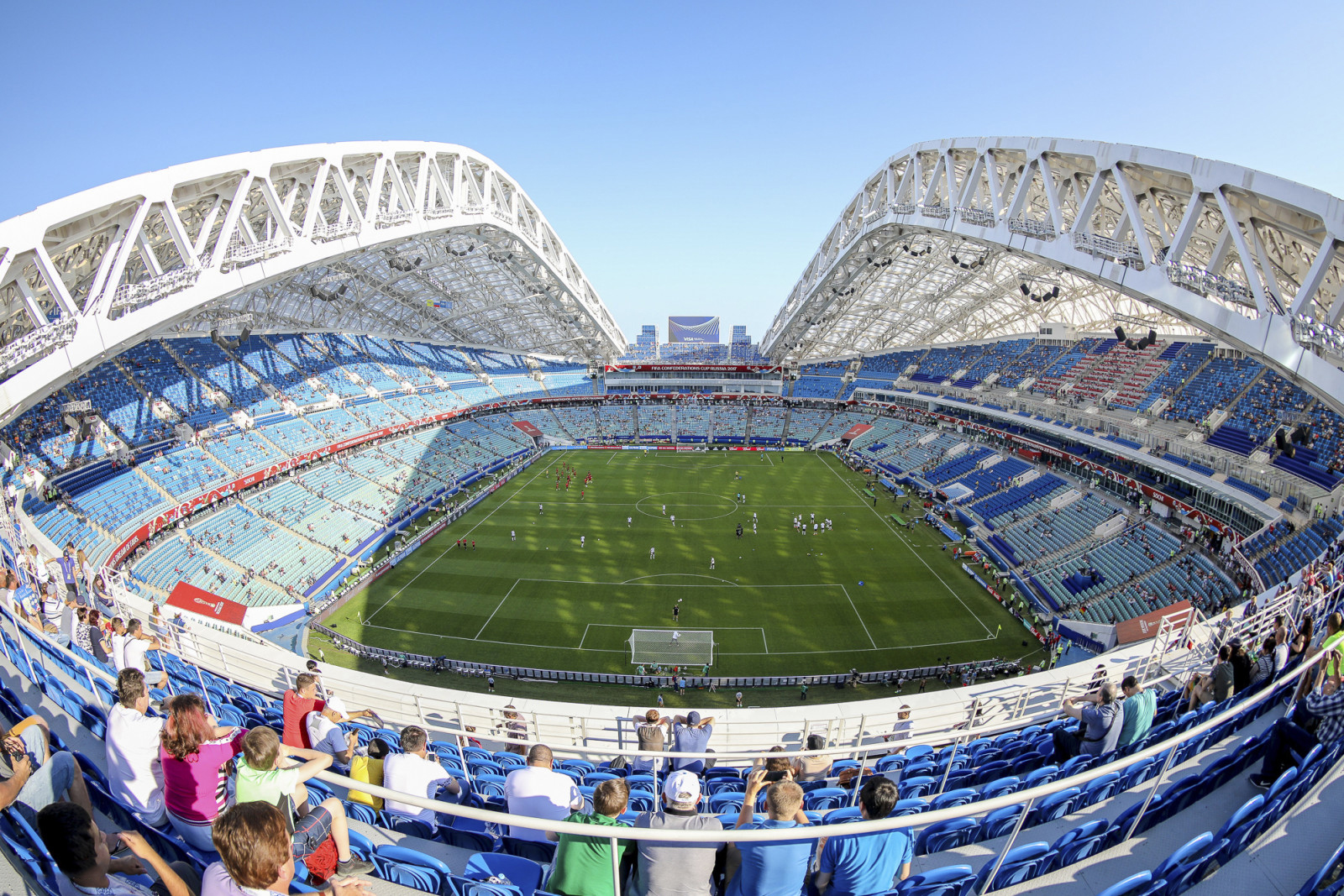
Rostov-on-Don- Levberdon Arena (New)
Rostov-on-Don is a port city on the Don River, 1109 km southwest of Moscow. Horses are a powerful symbol in the city’s history as seen in the First Cavalry Army monument, forming the base of the image in the poster. The Don River, central to the city’s identity, is represented by the blue swirling “waves” under the horses’ churning hooves. Green oak branches, which mimic the color of the football pitch, resemble, the Rostov-on-Don city’s heraldic emblem.
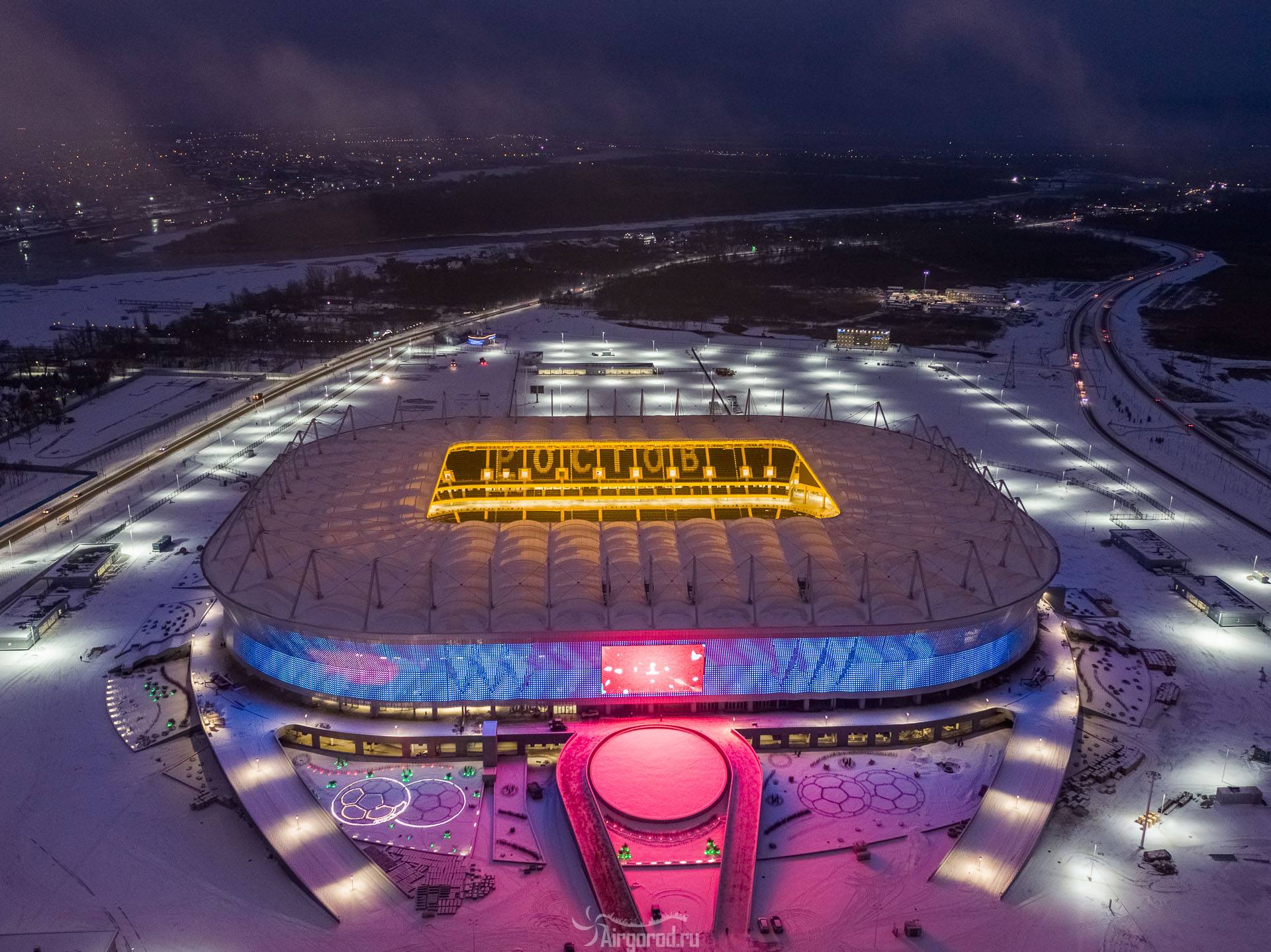
Saransk- Morodovia Arena (New)
As the capital of the republic of Mordovia, Saransk is located where the Saranka and Insar Rivers converge, in the Volga basin, about 650 kilometers east of Moscow. The bird depicted in the poster is the “bird of creation” in Mordovian mythology, a powerful and evocative figure, symbolizing nature and life itself. The bird and the football are decorated with the traditional Mordovian pattern representing the uniqueness of the local art and crafts.
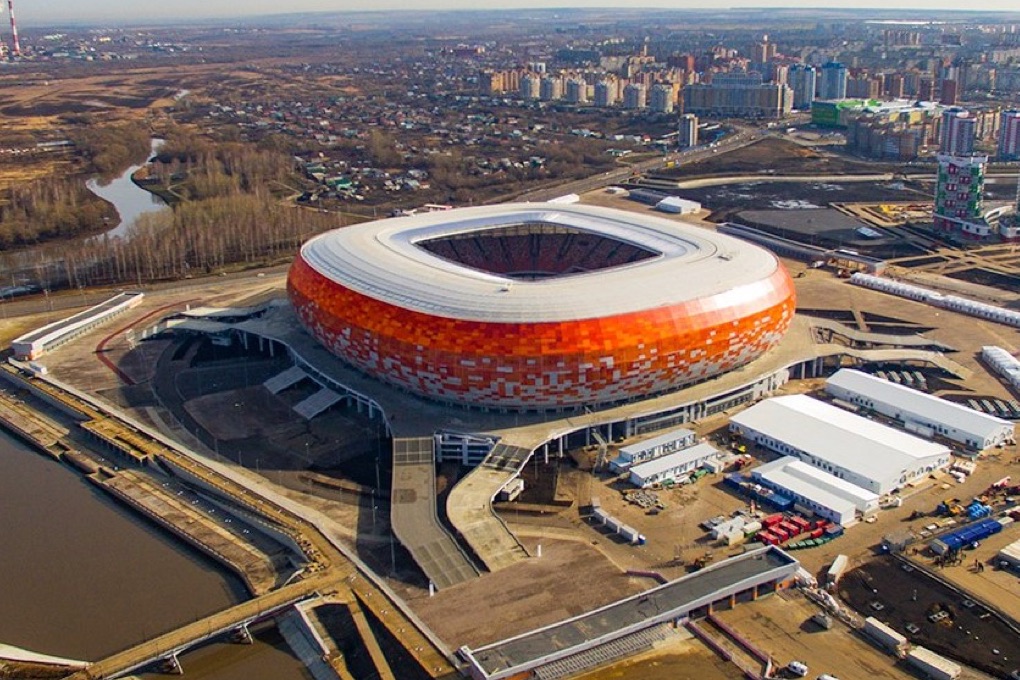
Volgograd- Volgograd Arena (upgrade)
Just as the city of Volgograd draws its energy and spirit from the Volga River, so does the poster. Produced in a modern, dynamic style reminiscent of today’s modern visual technologies, the poster’s colors are drawn from the river itself, the sun and the emotions associated with the game of football. The image is based on waves and movement, much like a football team in motion.
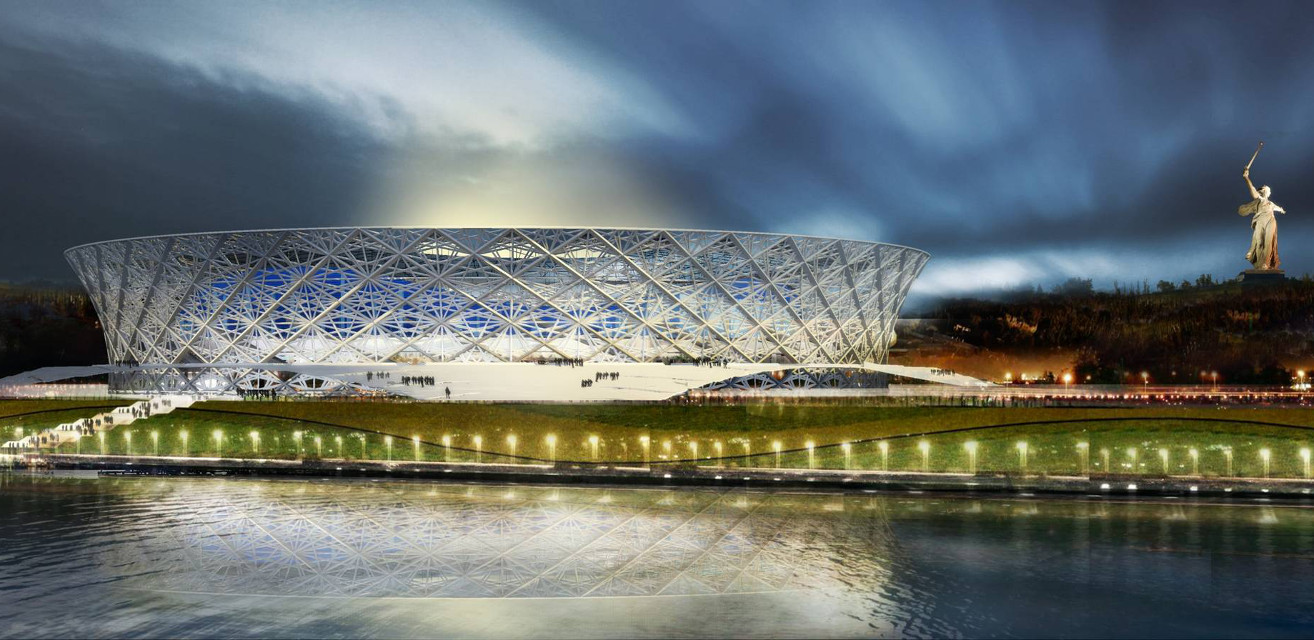
Kaliningrad- Arena Baltika (New)
Russia’s western-most city, Kaliningrad is unique. The athlete in this poster symbolizes the open spirit of the city and region, embracing both the old and the new with an eye towards the future. It is a city whose spirit is derived from the water that surrounds it, and whose soul is reflected in the football made of world-famous amber sunstone.

Yekaterinburg- Central Stadium (Upgraded)
Ekaterinburg, situated near the Ural Mountains is the point where the continents of Europe and Asia meet. At the centre of the image is a “Stone Flower”; the stone is the beautiful gemstone malachite, famous to the region. The Stone Flower is also the name of a famous Russian novel by Pavel Bazhov, set in the Urals. The colours of the poster represent the Urals, the mountains and the rich soil of the region.

Nizhny Novgorod-Strelka Stadium (New)
The vivid colours of red and orange represent passion, movement and expression in Russian culture. The athlete’s body in this poster is created with a traditional Russian design technique called Khokhloma. This folk-handicraft style is well-known and well-loved throughout Russia and abroad, and provides a sense of flowing movement and energy to the athlete.

Samara- Samara Stadium (New)
Located in the southeastern part of European Russia at the convergence of the mighty Volga and Samara Rivers, Samara is a city famous in Russia for its passionate, love of football. This passion is reflected in the poster by the strong, colourful geometric lines exploding upward, towards the future. The traditional symbols of Samara, the Monument of Glory and the Ladya Boat, are depicted as well and the pose of the football player mimics the figure at the top of the Monument of Glory.





